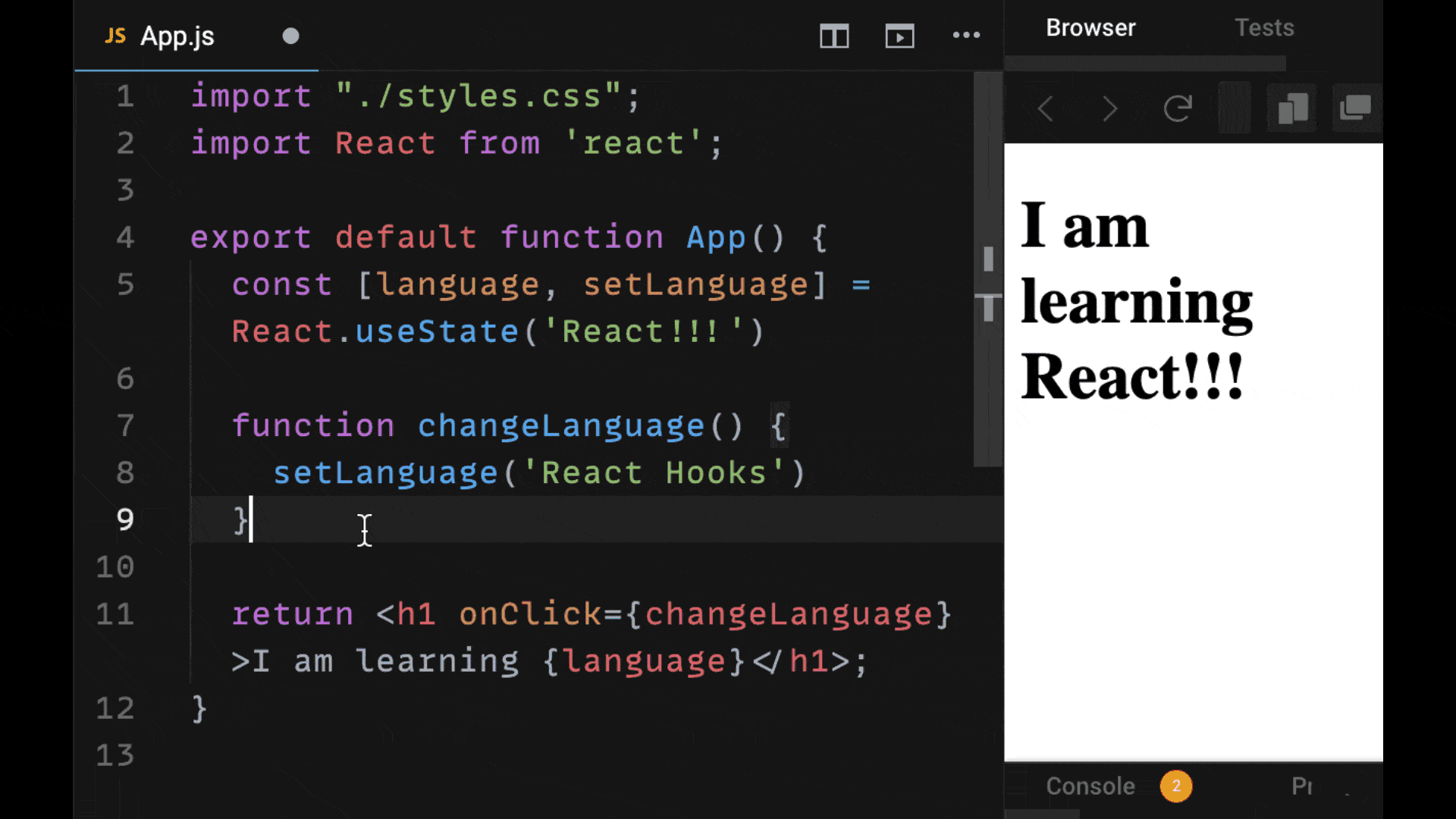useState Hook in React : All you need to know
Whether you’re a seasoned developer or just starting your journey into the realm of React programming, understanding the nuances of hooks is crucial. Among these, the useState hook stands out as a fundamental building block that enables you to manage state within functional components. In this comprehensive guide, we’ll explore the depths of the useState hook, from its basics to advanced usage, allowing you to wield its power with confidence and creativity.
Exploring the Essentials of the useState Hook
The useState hook in React is designed to simplify state management in functional components. It revolutionizes the way developers handle data by providing a concise and elegant solution to state-related challenges. By utilizing the useState hook, you can create dynamic and interactive user interfaces effortlessly.
Understanding the Basics
At its core, the useState hook enables you to add state to your functional components without the need for classes. This hook takes an initial state value and returns an array with two elements: the current state and a function to update it.
Leveraging the Advantages
- Simplicity: The
useStatehook simplifies complex state management tasks, reducing code verbosity. - Functional Components: With
useState, functional components can now manage state, eliminating the need for class components. - Performance: React optimizes the rendering process when using hooks, ensuring efficient updates and better performance.
The Journey: Exploring Various Use Cases
The useState hook’s versatility shines through when applied to different scenarios. Let’s dive into some common use cases:
Creating Interactive Counters
One of the simplest yet illustrative use cases of the useState hook is building interactive counters. You can effortlessly create components that track and display dynamic numerical values, enhancing user engagement.
Building Dynamic Forms
Forms are an integral part of web applications. The useState hook enables you to manage form inputs, validate user data, and provide real-time feedback to users.
Implementing Toggle Functionality
Creating toggle functionality, such as expanding and collapsing sections, becomes intuitive with the useState hook. By toggling a boolean state, you can seamlessly control the visibility of various UI elements.
Advanced Techniques and Best Practices
As you grow comfortable with the useState hook, you can explore advanced techniques and adhere to best practices that streamline your code and enhance maintainability.
Destructuring State Values
Destructuring the state values returned by the useState hook promotes cleaner code. By extracting the state and update function, you can improve readability and make your code more concise.
Updating State Conditionally
Updating state based on the previous state is a common requirement. The useState hook’s update function accepts a function that receives the current state, enabling you to make precise and reliable updates.
Managing Complex State Objects
While the useState hook works well with simple values, handling complex state objects requires a structured approach. You can employ the spread operator and the update function to manage nested state properties effectively.
FAQs
How does the useState hook differ from the setState method in class components?
In class components, the setState method is used to update state. The useState hook offers a similar functionality but is tailored for functional components, eliminating the need for classes and providing a more concise syntax.
Can I use multiple useState hooks in a single component?
Absolutely! You can use multiple useState hooks to manage different pieces of state within a single component. This approach enhances modularity and makes your code more organized.
Is it possible to pass props to the initial state of the useState hook?
Yes, you can initialize the state with props. However, keep in mind that the initial state is only set when the component mounts, so updates to the props won’t automatically reflect in the state.
How does the useState hook impact performance?
The useState hook, when used correctly, has a positive impact on performance. React’s intelligent rendering updates ensure that only the necessary components are re-rendered, leading to a more efficient application.
What are the alternatives to the useState hook?
While the useState hook is ideal for managing local component state, React offers other hooks like useReducer for more complex state management scenarios. Additionally, libraries like Redux provide global state management solutions.
Can the useState hook cause infinite re-renders?
If the useState update function is called unconditionally during rendering, it can lead to an infinite loop of re-renders. To prevent this, ensure that the update function is only called in response to user interactions or other controlled events.
Conclusion: Empower Your React Journey with the useState Hook
The useState hook in React represents a transformative shift in how developers manage state within functional components. From its humble beginnings as a simple hook for state management, it has evolved into a powerhouse of flexibility and efficiency. By grasping its concepts, exploring its capabilities, and adhering to best practices, you’re equipping yourself with the tools to build robust, dynamic, and user-friendly applications. Embrace the useState hook’s magic, and watch your React projects flourish like never before!
SOURCEBAE; HIRE REACT DEVELOPER





